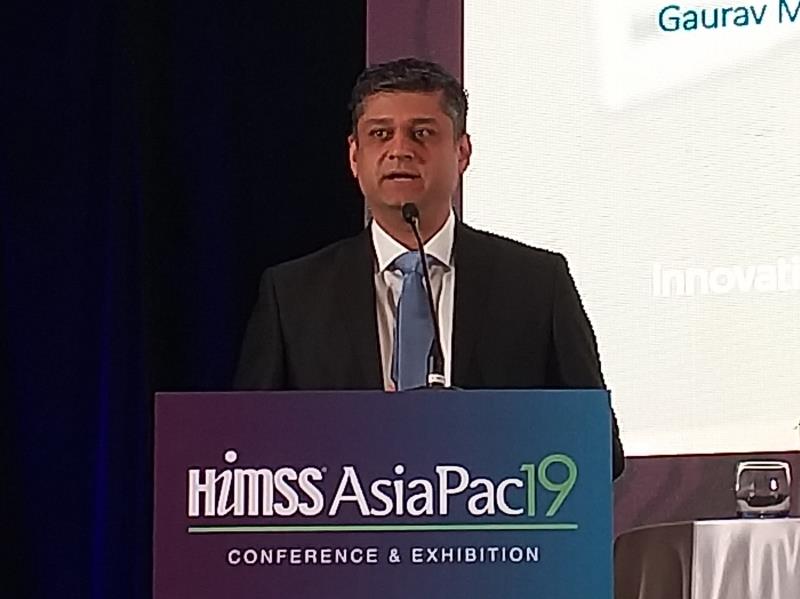 Gaurav Maini
Gaurav MainiIn providing value-based healthcare, the first step is to measure outcomes relevant to patients, according to a speaker who addressed healthcare professionals at the Health Information and Management Systems Society (HIMSS) Asia Pacific Conference 2019.
Gaurav Maini, managing director at a multinational electronics company, noted that delivering the best possible health outcomes at the lowest possible cost, which is the primary objective of a value-based healthcare, embodies quality improvement initiatives that require outcomes data as an input.
Outcomes have different forms, Maini said. Some organizations look at patient reported (quality of life, pain level, mental health indicators, disability levels and social factors), costs (treatment related, bundled payment indicators and activity-based), patient generated (weight/steps/heart rate, blood glucose, sleep pattern) and patient experience measures (patient experience, patient satisfaction, time to recovery). Then there are others that explore process measures (immunization percentage, length of stay, risk measures).
But regardless of the outcome, the measurement should be standardized, he stated. One global initiative supporting this is the International Consortium for Health Outcomes Measurements (ICHOM). The organization develops and publishes standard set materials that enable healthcare organizations to measure outcomes that matter and enable benchmarking.
In Asia, the Fortis chain of hospitals is the first healthcare provider to publish clinical outcome data on their website. The company has been measuring outcomes in the last 5 years, and about 60.5 percent of the more than 100,000 patients have responded to its outcome questionnaires. The resulting outcome reports prompted implementation of value-based model in eight areas of procedures/specialties, including coronary artery bypass graft (CABG), kidney transplant and radiation oncology.
Maini noted that in the following CABG outcomes, for instance, the implementation indeed saw improved rates when compared with ICHOM benchmarks: use of internal thoracic artery graft, 85.03 percent vs 74.20 percent; perioperative myocardial infarction, 0.28 percent vs 0.96 percent; postprocedure neurological stroke, 0.17 percent vs 0.80 percent; and need for re-exploratory surgery, 1.55 percent vs 3.55 percent.
Outcome measurement does not have to be complex and can be carried out in a stepped approach, Maini said. First is to define outcomes, measure using standardized sets (eg, ICHOM), then analyse and share outcomes data internally. The next steps are to learn from outcome variation with the aim of improving outcomes, make changes in areas where there is room for improvements, and finally, report outcomes and reduce cost.
In summary, systematic outcome measurement has several merits, such as including the patients’ voice in treatment, visualizing treatment progress at the point of care and enabling more efficient appointments due to better information, according to Maini.
Additionally, it allows local and global benchmarking, delivers insight in quality for both patient and provider, and supports new payment models (eg, bundled payments and value-based contracts), he continued.
“When we combine clinical data, financial data, patient experience… we are able to figure out what’s the value that a patient gets. And that is what we believe is value-based care,” Maini said.